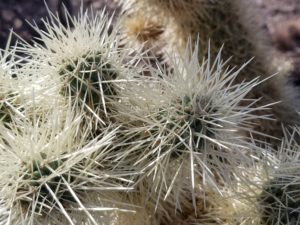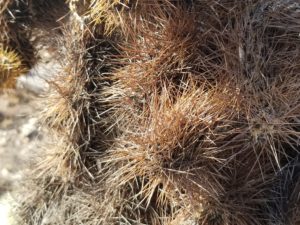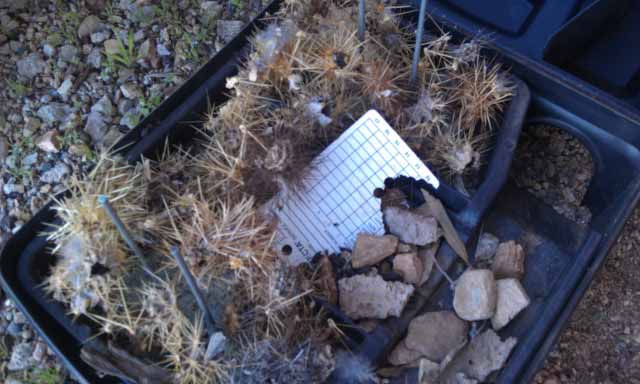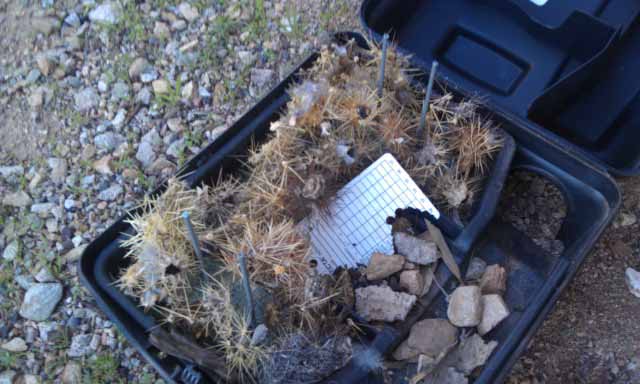Jumping Cholla cactus
Jumping Cholla – If you live anywhere in the desert you know about these cactus. They will attack if you get close. OK they won’t attack but it seems like it. Its like they are magnetic. But a question was asked recently why don’t rodents or coyote’s ever have them attached? Or better yet why not Pack Rats? It’s called behavior modification, they learn and they learn quickly. It’s amazing cause almost every time I’m in the desert I get a few. I kneel to check a rodent station and get one in my knee or there might be bits and parts inside the bait station. Sometimes I even get them in my shoes, right through the soles and you think its a rock but surprise a needle shooting pain.
The dangers of the desert
So a word of caution, there are many things in the desert that can do you harm, rattlesnakes, Africanized Honeybees, rocks and cacti – so use extreme care. I seem to find almost all of these dangers as I’m doing my work. Stay tuned for a resent find in a rodent bait station.
I have seen Pack rat middens or dens full of this stuff, how do they do it – I have no idea. I was training a technician once and mentioned to be careful, I had no sooner turned around and he had them from toe to waist on his right leg pants. Painful and barbed, did I say ouuuuuch? But yet the animals seem to be impervious or maybe it’s just that they are smarter. You decide!






